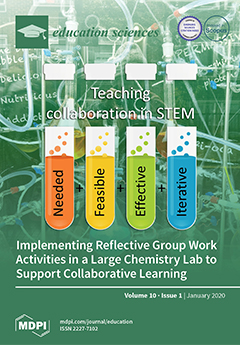When I was invited to edit a special issue of
Education Sciences on the theme of “Moral education and identity”, I saw an opportunity both to gain a better understanding of how scholars across a range of disciplines construed the task of moral
[...] Read more.
When I was invited to edit a special issue of
Education Sciences on the theme of “Moral education and identity”, I saw an opportunity both to gain a better understanding of how scholars across a range of disciplines construed the task of moral education in terms of identity and—I can now confess—to defend the claim that moral education, when properly understood, depends upon an account of identity which is quite different from that which dominates the social sciences, the media and popular opinion. My aim here is to provide such an account and, thereby, to suggest how we might construe the challenge of moral education in a world, and at a time, in which self-centered, short-sighted and narrow-minded thinking dominates much of the socio-political landscape. I argue that the dominant view of identity—that our own identities are constituted by those collectives and institutions with which we
identify—actually reinforces narratives which bind us to
tribal perspectives—in national, religious and cultural terms—in which we increasingly see ourselves and others in terms of who is “in” and who is “out”. I propose a relational view of identity in which each person sees her/himself as “one among others”, where the relationships in question both bind us in familiar and concrete ways to others—i.e., other persons but also other objects in the world—and transcend the boundaries imposed by belonging to this or that nation, religion, culture, or tribe. This idea of what it means to be a person goes hand-in-hand with a framework for moral education which is also both concretely relational and appropriately transcendent. Put briefly, we need to create the conditions in which young people engage one another
dialogically in taking responsibility for tackling what I term “the Big Questions”, including: “What do I/we stand for?”, “What/who really matters?”, “What kind of society/world do I/we want to live in (and leave for future generations)?”, and “What is my place in the world?”. (In taking this approach, I aim to address at least some of the questions posed in the original
call for submissions for this special issue, as outlined at the Special Issue “Moral Education and Identity”).
Full article





